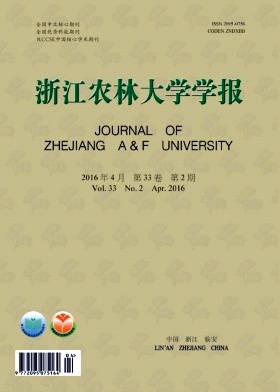Habitat suitability evaluation for Amur tigers in northeast China based on GIS and RS
doi: 10.11833/j.issn.2095-0756.2016.02.011
十二五国家科技支撑计划项目(2012BAH34B01)
- Received Date: 2015-03-19
- Rev Recd Date: 2015-09-01
- Publish Date: 2016-04-20
-
Key words:
- zoology /
- geographic information system (GIS) /
- remote sensing (RS) /
- Amur tiger /
- habitat suitability /
- mathematical model
Abstract: This article researched the habitat suitability evaluation for Amur tigers in northeast China, which found the potential distribute area and provided decision-making for the establishment of Amur tiger nature reserve and the plan of getting back to nature of artificial breeding Amur tigers. The study area in northeast China included the three provinces of northeast China and the northeast region of Inner Mongolia. According to the principles of stability, independence, dominance, and comprehensiveness, the habitat suitability of Amur tigers in northeast China was assessed using the three aspects of vegetation, geographical environment, and human disturbance with vegetation type, vegetation coverage, elevation, gradient, slope direction, water source, residential areas, and main roads selected as evaluation variables. Data for each variable was collected quantitatively using geographic information systems (GIS) and remote sensing (RS). Then the Amur tiger habitat suitability evaluation classification figure was obtained using the Analytic Hierarchy Process (AHP) method to determine the weight of each evaluation factor, and using the fuzzy mathematical model for the single factor weighted superposition. Afterward, the partitioning of areas was conducted. Results showed that human disturbance and vegetation were the main factors affecting the Amur tiger distribution. The study area was classified as most appropriate (21.97%), second suitable (16.83%), generally appropriate (22.02%), and inappropriate distribution areas (39.18%). Thus, the living space that could be appropriated for Amur tigers compared to the total potential habitat area in the Northeast China was considerable approximately 48.8%. [Ch, 3 fig. 3 tab. 25 ref.]
| Citation: | LI Yacang, FENG Zhongke, HUANG Jixia, YANG Liu. Habitat suitability evaluation for Amur tigers in northeast China based on GIS and RS[J]. Journal of Zhejiang A&F University, 2016, 33(2): 265-271. doi: 10.11833/j.issn.2095-0756.2016.02.011 |






 DownLoad:
DownLoad: